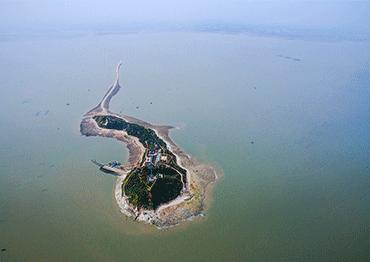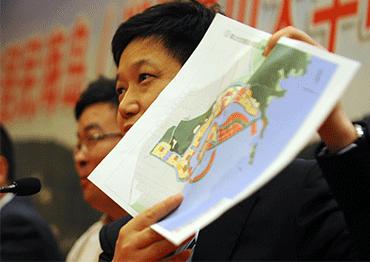With 633 islands, Liaoning Province has the most islands in Northeastern China. Only 44 are inhabited year-round. Among its 589 uninhabited islands, 198 have been developed.
Applying for land-use rights for islands is complicated. According to regulations set by the Liaoning Provincial Department of Natural Resources (DNS), island type and usage are factored into the sale price. This includes an assessment of rare or endangered species and appraisal of fresh water, sand and other resources.
In Liaoning, island usage falls into six categories. The greater the ecological impact on the island, the higher the price to transfer the land use rights. For example, a tourism project with minimal impact costs from 3,700 to 9,500 yuan (US$535-1,375) per hectare, while projects involving land reclamation or removal could cost between 7.27 million and 24.55 million yuan (US$1.05m-3.55m) per hectare.
Authorities have increased the prices for uninhabited islands in recent years. According to Liaoning DNS, this raises the threshold for investors as an environmental protection measure.
“The reason they’ve adjusted the cost is very clear; it focuses more on protection,” Cui Wanglai, a professor at Zhejiang Ocean University, told NewsChina. Cui said that pricing for uninhabited islands is similar among Chinese mainland coastal provinces, in step with the official policy for island purchases from the Ministry of Finance (MoF) and the State Oceanic Administration (SOA, now part of the Ministry of Natural Resources) in 2018.
According to the policy, provincial governments were required to fix purchasing price standards by the end of April 2019 and report them to the MoF and the SOA. However, many missed the deadline, including Liaoning.
While Liaoning’s new island transfer policy garnered media attention, it did not create the interest many in the industry expected. Lin Dong, founder of the China Island Owners Alliance, told NewsChina that after introducing provincial policies, hundreds of people consulted with him on island investments. But when Liaoning issued the policy, Lin said less than 10 people had expressed interest as of August.
“Many people want to own an island, but as local governments set an invisible threshold, buying one becomes very difficult,” Lin said.
In 2017, the city of Zhuhai, Guangdong Province listed Triangle Island for sale. Next to Hong Kong and Macao, the island quickly attracted potential private buyers. But Zhuhai Jiuzhou Holding Group, a local State-owned company, won the bid with a proposed investment of around 2.2 billion yuan (US$329m) and a development cycle of five years.
Lin told NewsChina that Zhuhai has sold off many of its most attractive islands. For example, local company Gree Real Estate acquired the sub-tropical and picturesque Miaowan Island in 2014.
Lin said that most governments prefer to handle sales “internally.” For example, in Liaoning Province, issues like price appraisal, development requirements and land-use transfers to companies in other provinces are not specified.
Due to the scarcity of island resources, local governments are often conservative about their use. According to Xu Wei, a researcher specializing in islands at the National Ocean Technology Center, China has 6,693 small, uninhabited islands, mainly along the coast of Zhejiang, Fujian and Guangdong provinces. “Although China has a significant number of islands, few are really suited for development,” Xu said. “China only has 69 uninhabited islands larger than one square kilometer, and the rest are too small to have any development value unless they are close to the mainland.”
“Some governments have raised the threshold in recent years as they know that islands with the best resources will sell first, while the rest become less and less attractive,” Lin Dong said.
To address these issues, China allowed market-oriented land transfers, which Cui said reflect the real value of an island. “Just like a city’s land prices can vary, the price for uninhabited islands with similar natural assets vary between Liaoning and Zhejiang provinces.”
Liaoning in the north has a harsh winter climate, while prosperous Zhejiang, south of the Yangtze River and near Shanghai, is much hotter for longer.
However, these transfer policies have had little effect. Last year, Guangdong announced it would pilot market-oriented transfers for uninhabited islands and streamline the approval process. But an employee from Guangdong DNS told NewsChina that they have not used it. “The announcement is just a reference for future island purchases and operations,” said the employee, who requested anonymity.

 Old Version
Old Version

